
Opinion
10:46, 12-Feb-2019
How dead is the missile pact?
Updated
16:41, 12-Feb-2019
Dmitry Stefanovich
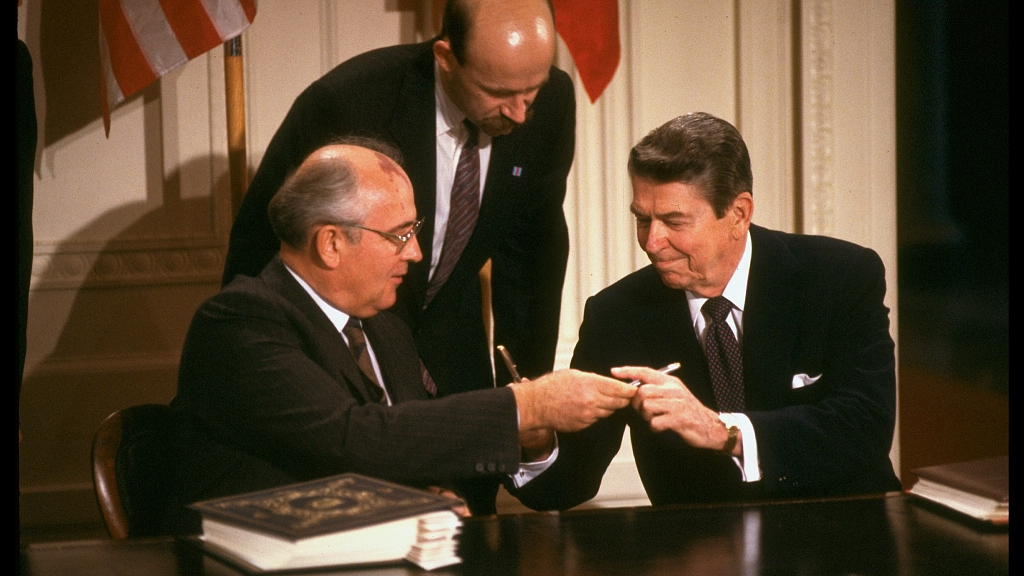
Editor's note: Dmitry Stefanovich is a research fellow at the Russia International Affairs Council and an independent expert in the field of international affairs, strategic stability, military technology, and conflicts. The article reflects the author's opinion, and not necessarily the views of CGTN.
In February 2019, it is obvious that neither Russia nor the U.S. is ready for concessions that may save the Intermediate-range Nuclear Forces (INF) Treaty that served as a cornerstone of international security and strategic stability for three decades. Obligations under the INF Treaty are already suspended and it will likely be terminated in August.
Currently, the forecasts and statements on future developments seem rather vague, and there's still a good chance to avoid massive deployments of new missiles throughout Europe and Asia (at least nuclear weapons).
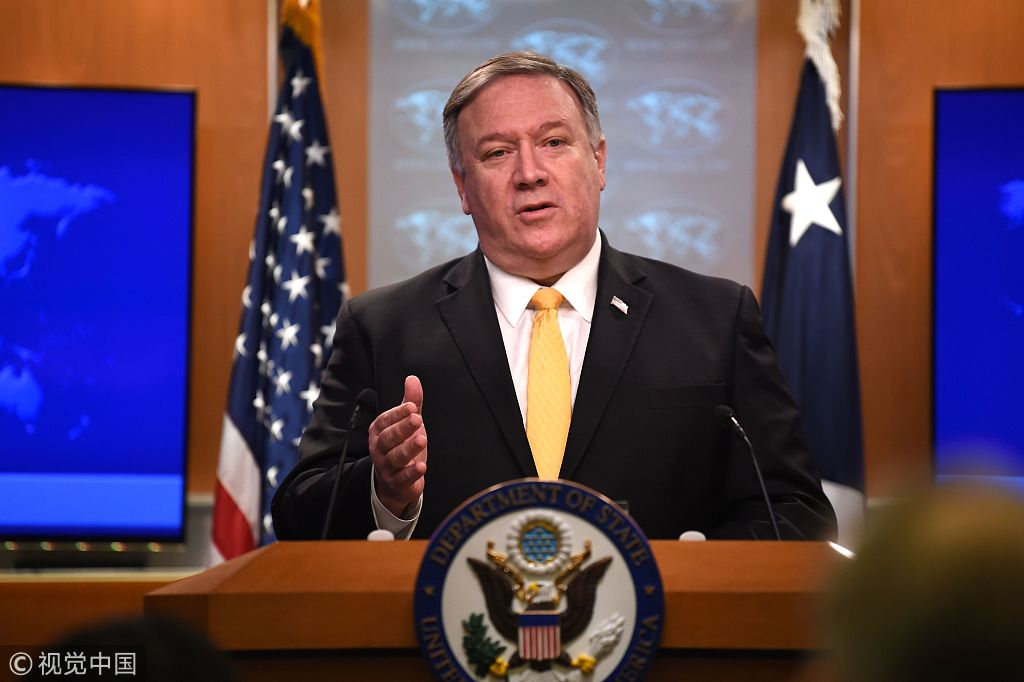
U.S. Secretary of State Mike Pompeo announces the American withdrawal from the Intermediate-Range Nuclear Forces Treaty with Russia, February 1, 2019. /VCG Photo
U.S. Secretary of State Mike Pompeo announces the American withdrawal from the Intermediate-Range Nuclear Forces Treaty with Russia, February 1, 2019. /VCG Photo
Russia and the U.S. remain leaders in missile technology. Given the geography, the future military environment around China may become much more competitive with a new intermediate and shorter-range missile system which is ready to be launched with extremely short flight times.
The INF treaty banned cruise and ballistic missiles with ranges between 500 and 5,500 kilometers. It is important to understand what systems in Russia and the U.S. may be ready for deployment in the near future.
Ground-launched cruise missiles (GLCM) refer to U.S. tomahawks that, theoretically, can be launched from the land-based vertical launch system of Aegis Ashore missile defense complex, and Russian 9M729 (SSC-8) deployed in several missile brigades along with regular Iskander-M launchers.
They were at the center of the current treaty crisis, so let's see what "real" intermediate-range GLCM may be developed now.
In the U.S., air-launched JASSM family (likely longer-range JASSM-ER or JASSM-XR) looks appropriate for the new GLCM. This project may be linked with the ongoing development of "land-based LRASM" and likely may use similar launchers.
First-test-launches may take place as early as this spring – otherwise, it is hard to understand why the U.S. suspended the INF Treaty obligations in the first place.
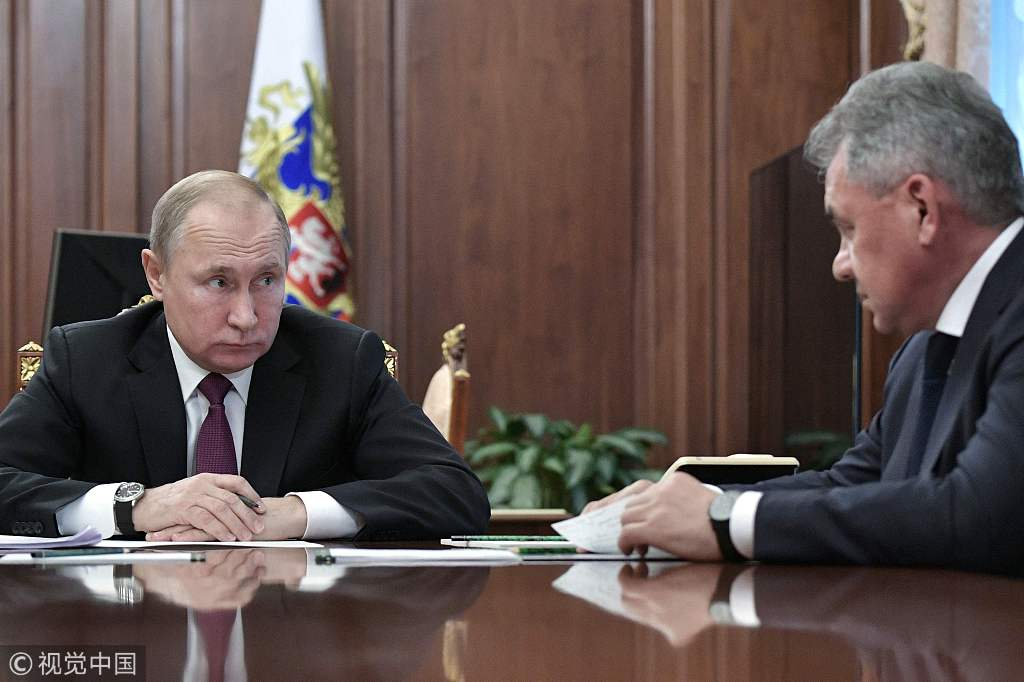
Russian President Vladimir Putin (L) with Russian Defense Minister Sergei Shoigu in Moscow, February 2, 2019. /VCG Photo
Russian President Vladimir Putin (L) with Russian Defense Minister Sergei Shoigu in Moscow, February 2, 2019. /VCG Photo
Meanwhile, the Russian Ministry of Defense offered an obvious option: a land-based version of the sea-launched Kalibr cruise missile.
Kalibr itself is already an agile missile system that fits in different launchers on surface ships and submarines. Anti-ship missiles using same sea-based launchers have coastal versions – namely Bastion-P (on the same MZKT-7930 chassis as Iskander-M family).
Finally, the launcher for the 9M729 GLCM demonstrated by Russia in January looks very much like the one that had been marketed as "Club-M" missile system, an export version of Kalibr with range limited to 300 kilometers in order to follow Missile Technology Control Regime guidelines – as early as in 2007.
Overall, this project does not look like a serious challenge for the Russian defense industry. We may even see first deployments in 2019 - if there will be an escalation.
Ballistic missiles are more dangerous, especially for those with enhanced precision and missile defense penetration capabilities. The Precision Strike Missile is under development to substitute venerable U.S. Army ATACMS, and it was already advertised with a 499 kilometer range. Increasing its range to 800 kilometer looks like a trivial task.
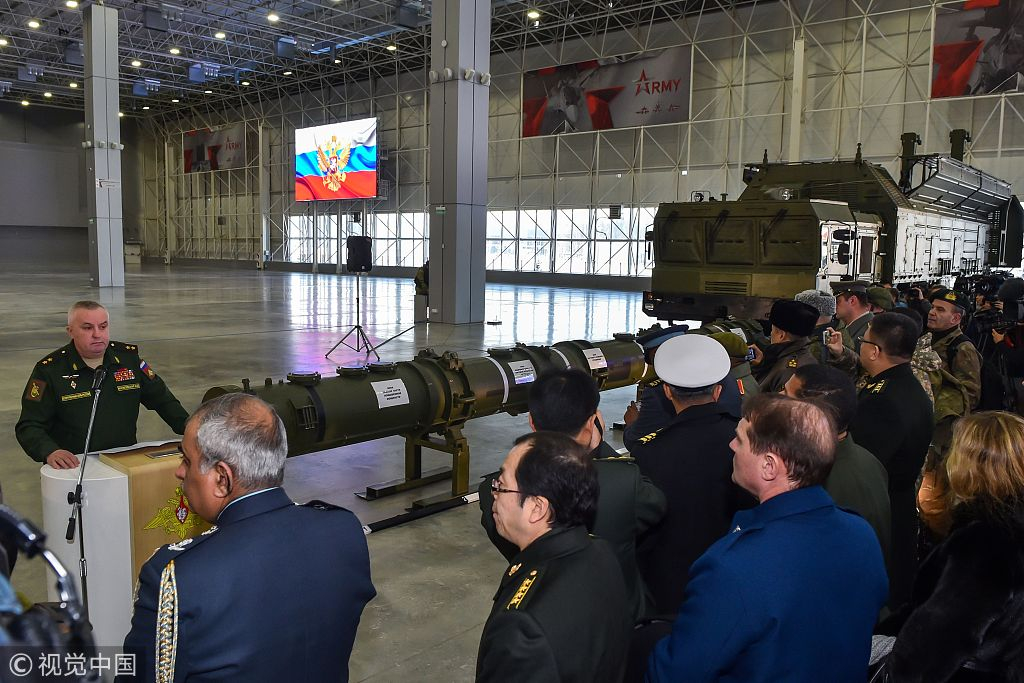
Russian Defense Ministry officials demonstrate Russia's 9M729 missile at the military Patriot park outside Moscow, January 23, 2019. /VCG Photo
Russian Defense Ministry officials demonstrate Russia's 9M729 missile at the military Patriot park outside Moscow, January 23, 2019. /VCG Photo
If the international military-political environment continues to degrade, something like "Pershing-III" intermediate-range ballistic missile (IRBM) may come into being as well, but this is not a short-term project.
The U.S. has plenty of hypersonic boost-glide multi-domain projects as well, including land-based ones, but it is hard to forecast how long it will take to field them.
In Russia, there were some intriguing words in the initial proposal by Defense Minister Sergei Shoigu: intermediate and shorter-range hypersonic ballistic missiles.
President Vladimir Putin supported the intermediate range hypersonic missile project, and later Shoigu himself mentioned a “long-range hypersonic missile.” According to official Ministry of Defense of the Russian Federation glossary, “long-range” may mean “400+ km.”
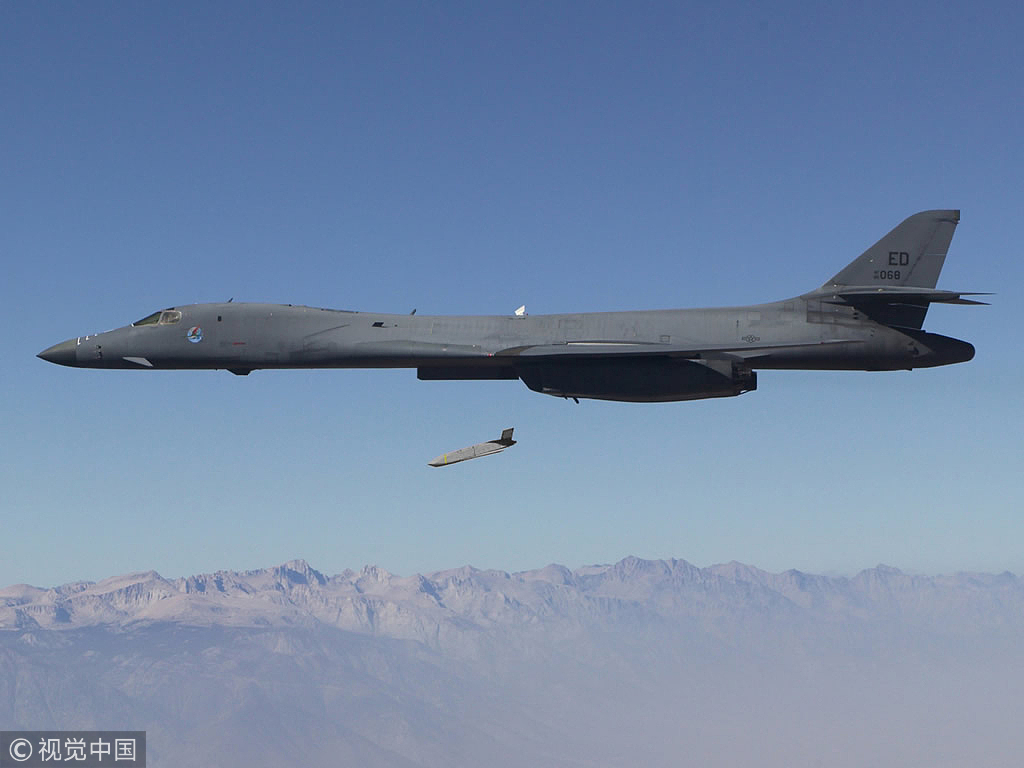
A long-range anti-ship missile prototype, launched by a B-1 bomber in the U.S., November 11, 2014. /VCG Photo
A long-range anti-ship missile prototype, launched by a B-1 bomber in the U.S., November 11, 2014. /VCG Photo
Furthermore, though it may be too early to make conclusions, there's a probability that initially the Ministry of Defense (and defense industry) desired more new land-based hypersonics.
There's a chance for land-based Tsirkon hypersonic naval missile or a two-stage 9M723 quasi-ballistic missile derivative that may resemble another offshoot – the Kinzhal air-launched hypersonic missile.
Even a re-branded "light" Rubezh road-mobile ICBM (currently canceled) project may re-surface – and remind everyone of the infamous RSD-10 Pioneer, the “hero” of the previous missile crisis. Things may get even more interesting with a hypersonic glider a-la Avangard as a payload.
All in all, there are plenty of new toys for the Great powers to play with – and their partners may line up to get export versions of those for their own needs, putting additional pressure on Missile Technology Control Regime and broader non-proliferation issues.
However, given "no-first-deployment" announced by Russia, the absence of plans for nuclear payloads in the U.S., and general arms control experience, one can expect a new military-political era. The biggest challenge is to find options suitable for other actors to join the post-bipolar arms control process and make the world a safer place.
(Cover: Soviet leader Mikhail Gorbachev and his summit host President Ronald Reagan (L) exchange pens during INF agreement signing ceremony in Washington, December 8, 1987. /VCG Photo)
(If you want to contribute and have specific expertise, please contact us at opinions@cgtn.com.)

SITEMAP
Copyright © 2018 CGTN. Beijing ICP prepared NO.16065310-3
Copyright © 2018 CGTN. Beijing ICP prepared NO.16065310-3